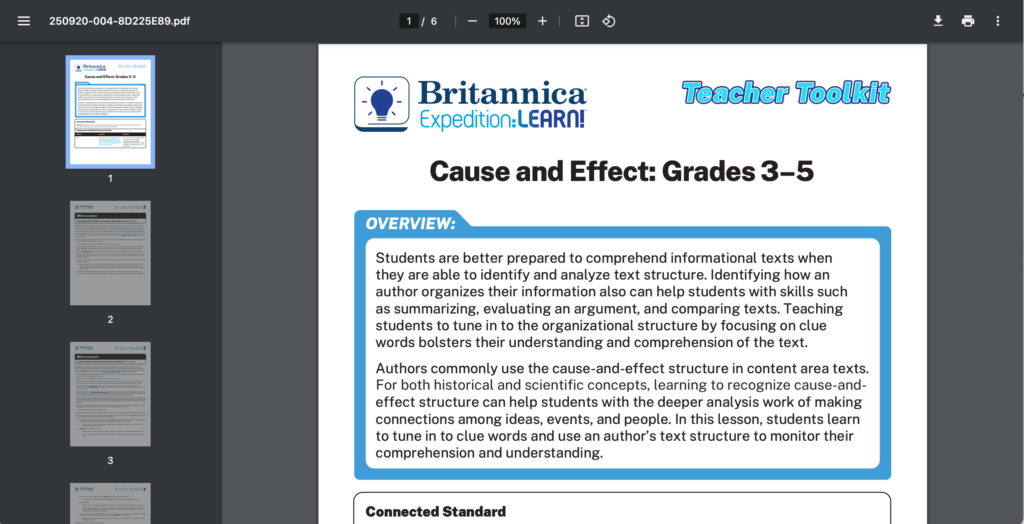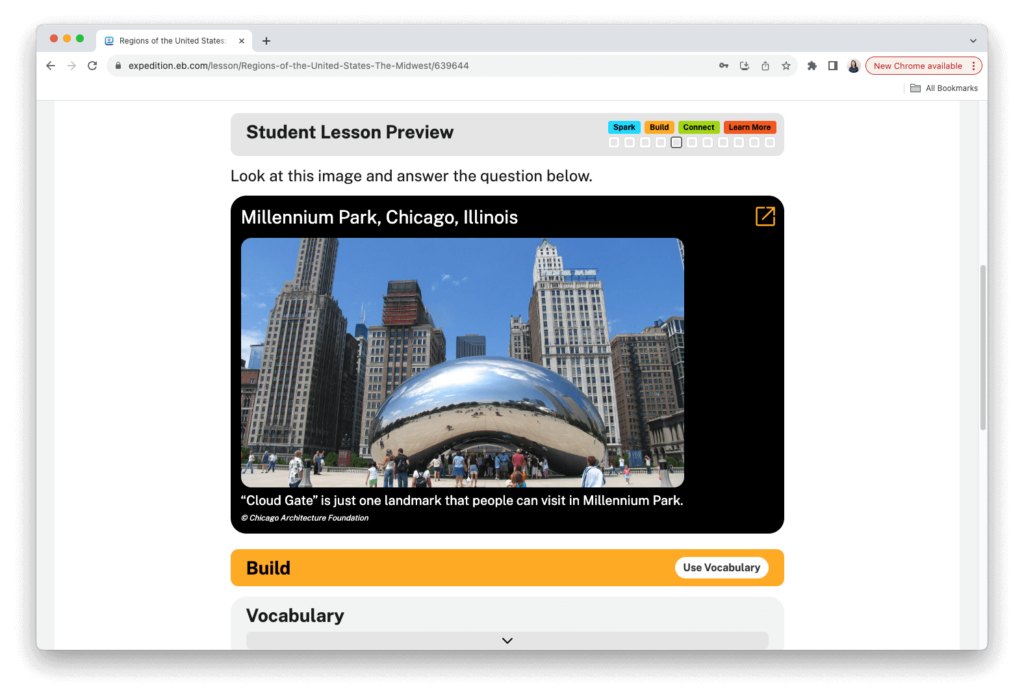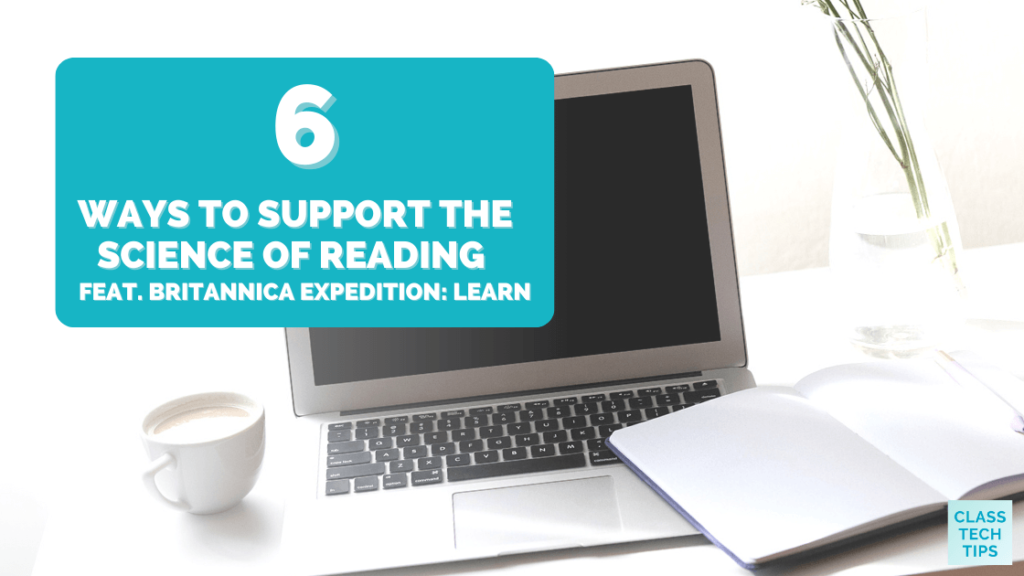How do you support the Science of Reading in your classroom? This year, many schools and districts are embracing the Science of Reading and looking for ways to incorporate literacy skills across the content areas. Britannica Expedition: Learn provides teachers access to digital lessons they can share with their students to supplement traditional ELA instruction.
Britannica Education gives teachers access to high-quality resources that support the Science of Reading and the integration of ELA skills across subject areas. It covers a wide variety of Social studies and science topics with digital lessons for third through eighth-grade students.
Regular readers of the blog might remember this fall post introducing Britannica Expedition: Learn and its connection to the Science of Reading. Today, we’ll look at six ways to support the Science of Reading with their digital lessons and resources!
The Science of Reading with Britannica Expedition: Learn
If you haven’t seen it in action yet, here is a quick overview of what’s possible with Expedition: Learn. This platform provides teachers with access to digital lessons they can share with their students. Each digital lesson in Expedition: Learn is designed to help students spark interest in the topic, build understanding, connect learning to previous experiences, and encourage students to learn more.

There are curated collections of lessons on topics like “Elementary School Civics and Government” and “Middle School U.S. History.” You’ll also find lessons on specific topics like “The Ancient Olmec and Maya” and “Who Was Abraham Lincoln?” These resources can supplement your traditional instruction in an ELA environment, particularly if you want to connect literacy skills to Social Studies or Science topics.
Teacher Toolkit: Resources for Educators
Britannica Expedition: Learn includes lots of resources for teachers to help them save time and integrate the Science of Reading across the content areas. Students answer questions within each digital lesson and the responses are organized in the platform into the Skills Report. The Skills Report shows connections to skills like “Identify Main Idea and Details” or “Compare and Contrast” that you can track throughout a student’s experience on the platform. This way you can address the needs of students as they strengthen specific literacy skills.

In addition to the Skills Report there are supporting resources for teachers to help them make the most of this assessment data. The Teacher Toolkit helps educators make literacy skill connections to their content area instruction. These resources are designed to support teachers in addressing learning gaps and the needs of all of their students. Instead of just assessing students to gather formative assessment data, the Teacher Toolkits help teachers figure out exactly what to do next to meet the needs of their students. This link will take you to an overview of the Teacher Toolkit and you can see an example of the “Cause and Effect” resource above.
6 Ways to Support the Science of Reading
Earlier this year, I had a chance to get a behind-the-scenes look at the platform. The lesson structure supports so many best practices related to the Science of Reading. There are also assessment opportunities built in for teachers to check for understanding, too. Let’s take a look at six ways to support the Science of Reading with the digital lessons and resources from Britannica Expedition: Learn.

Background Knowledge
Britannica Expedition: Learn includes multimedia content for students to explore. Through engaging videos, reflection questions, and pre-teaching vocabulary, each lesson activates and builds a student’s background knowledge. This lesson structure prepares students for purposeful learning and sets the stage for focused reading. Each lesson follows the same Spark, Build, Connect, and Learn More structure. This way students are prepared for each reading experience.
Vocabulary
Throughout their experience in Britannica Expedition: Learn’s digital lessons, students acquire and engage with both academic and domain-specific vocabulary. Each Expedition: Learn lesson has multiple opportunities for students to interact with key vocabulary related to the topic. They have access to a word list with a definition for each word. Students will also see a button they can press to hear the world read aloud.
Text Structure and Verbal Reasoning
The digital lessons in Britannica Expedition: Learn scaffold student comprehension intentionally. The elementary and middle school lessons help students see text structures related to literacy skills. This includes skills like making inferences, drawing conclusions, and establishing connections.
Language Structure
As students dive into the reading materials, they’ll explore complex, content-rich texts. Within these texts, students can apply syntax and context to make meaning of words, phrases, and sentences. There is a clear connection between core literacy instruction and social studies and science content.
Literacy Knowledge
Another way to support the Science of Reading with Expedition: Learn is through the use of digital texts. These reading experiences can help build students’ understanding of digital and informational texts. As students increasingly interact with a range of reading materials, these digital literacy experiences are crucial for their success throughout the school year.
Reading Comprehension
The experiences students have in Expedition: Learn can boost their reading comprehension and help them construct the meaning of what they read. Students have multiple ways to showcase their learning throughout their reading experience, and Expedition: Learn encourages analysis, reflection, and critical thinking.

Britannica Expedition: Learn’s Digital Lessons
Ready to get started with Britannica Expedition: Learn? This page provides an overview of everything Expedition: Learn has to offer students and teachers. In addition to all the ready-to-use digital lessons available for you to explore, Britannica Education can also work alongside a district to create curated curriculum connections to help support your Science of Reading initiatives.
Learn more about Expedition: Learn and how it can support teachers and curriculum directors to infuse literacy instruction into science and social studies lessons.







